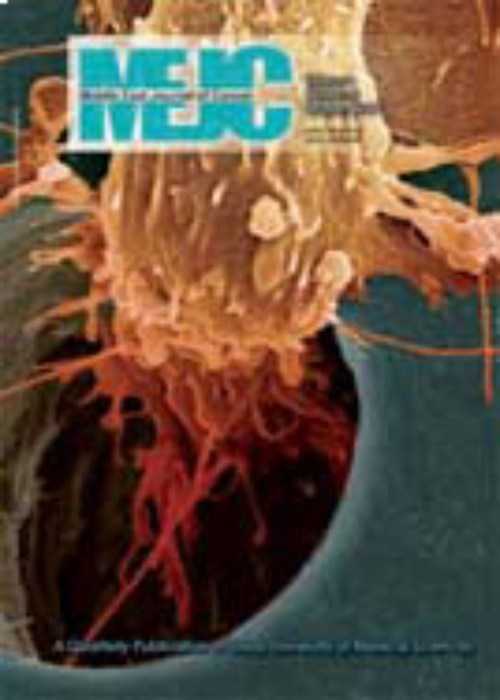Impact of Scattered Radiation on Testosterone Deficiency and Male Hypogonadism in Rectal Cancer Treated with External Beam Pelvic Irradiation
Author(s):
Abstract:
Background
We performed a prospective study to evaluate the effects of pelvic irradiation on FSH, LH and testosterone levels in male patients with rectal adenocarcinoma. Our aim was to compare the level of male sex hormones in peripheral blood serum before and after pelvic irradiation.Methods
The eligible participants were 40 men with rectal adenocarcinoma who underwent pelvic radiotherapy as part of their treatment for primary tumor, either before or after surgery. All patients received a 50-Gy radiation dose to the pelvis, 2 Gy per fraction, five days per week. Blood was sampled three times during the study: once before radiation, at the end of the radiation course and 4 to 6 weeks after radiotherapy.Results
Median age of the patients was 58 years (range 18-82). The mean testis dose of radiation per fraction in all 40 patients was 16.3 cGy with a standard deviation of 15.22 (range 5.5-64.8). Serum levels of FSH revealed a significant increase from 7.5 ± 1.7 IU/L (before treatment) to 20.9 ± 17.8 IU/L [end of radiotherapy (P<0.001)] and 24.1 ± 20.5 IU/L [4 to 6 weeks after radiotherapy (P<0.001)]. Serum LH levels were significantly elevated from 8.04 ± 1.2 IU/L before radiation to 11.6 ± 11.5 IU/L at the end of radiotherapy (P<0.001) and 12.5 ± 9.9 IU/L 4 to 6 weeks after the final course of radiotherapy (P<0.001). There was a decrease in serum testosterone from 5.3±2.1 ng/mL before radiation to 4.2 ± 1.9 ng/mL at the end of radiotherapy (P=0.004) and 4.5 ± 2 ng/mL 4 to 6 weeks after radiotherapy (P=0.035). No significant correlation was seen between age and differences in sex hormones (LH, P=0.605; FSH, P=0.380; testosterone, P=0.161).Conclusion
There was a significant change in serum levels of male sex hormones after pelvic irradiation for rectal cancer (total dose, 50 Gy) that indicates considerable testicular damage under these circumstances. Thus, it seems logical to use techniques that reduce the radiation dose to the testicles and to consider the benefits of hormonereplacement therapy as well as semen cryopreservation for high-risk patients who desirechildren in the future.Language:
English
Published:
Middle East Journal of Cancer, Volume:1 Issue: 3, Jul 2010
Page:
115
magiran.com/p810984
دانلود و مطالعه متن این مقاله با یکی از روشهای زیر امکان پذیر است:
اشتراک شخصی
با عضویت و پرداخت آنلاین حق اشتراک یکساله به مبلغ 1,390,000ريال میتوانید 70 عنوان مطلب دانلود کنید!
اشتراک سازمانی
به کتابخانه دانشگاه یا محل کار خود پیشنهاد کنید تا اشتراک سازمانی این پایگاه را برای دسترسی نامحدود همه کاربران به متن مطالب تهیه نمایند!
توجه!
- حق عضویت دریافتی صرف حمایت از نشریات عضو و نگهداری، تکمیل و توسعه مگیران میشود.
- پرداخت حق اشتراک و دانلود مقالات اجازه بازنشر آن در سایر رسانههای چاپی و دیجیتال را به کاربر نمیدهد.
دسترسی سراسری کاربران دانشگاه پیام نور!
اعضای هیئت علمی و دانشجویان دانشگاه پیام نور در سراسر کشور، در صورت ثبت نام با ایمیل دانشگاهی، تا پایان فروردین ماه 1403 به مقالات سایت دسترسی خواهند داشت!
In order to view content subscription is required
Personal subscription
Subscribe magiran.com for 70 € euros via PayPal and download 70 articles during a year.
Organization subscription
Please contact us to subscribe your university or library for unlimited access!


